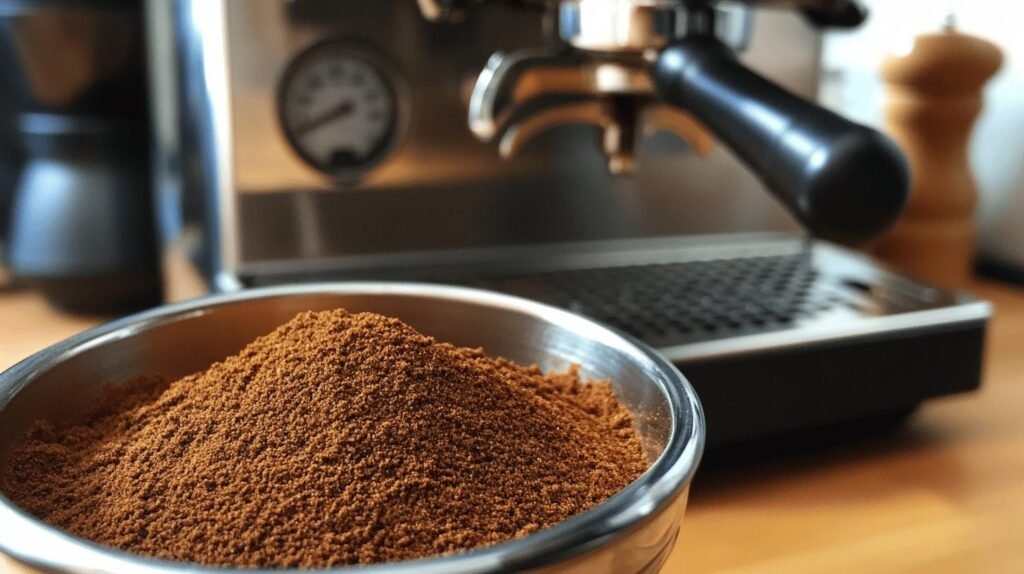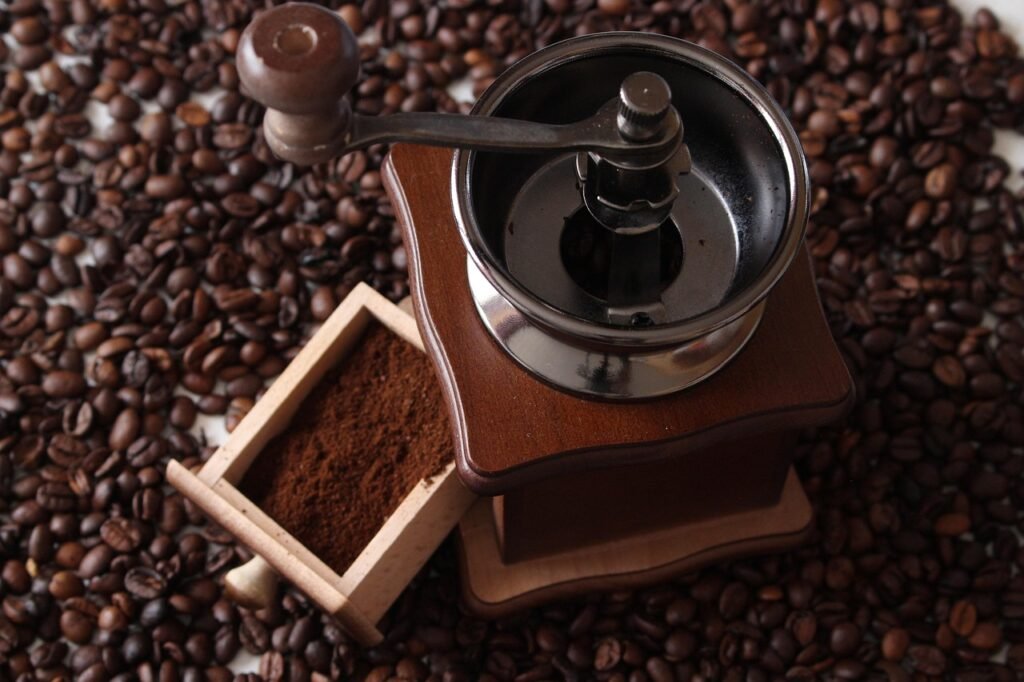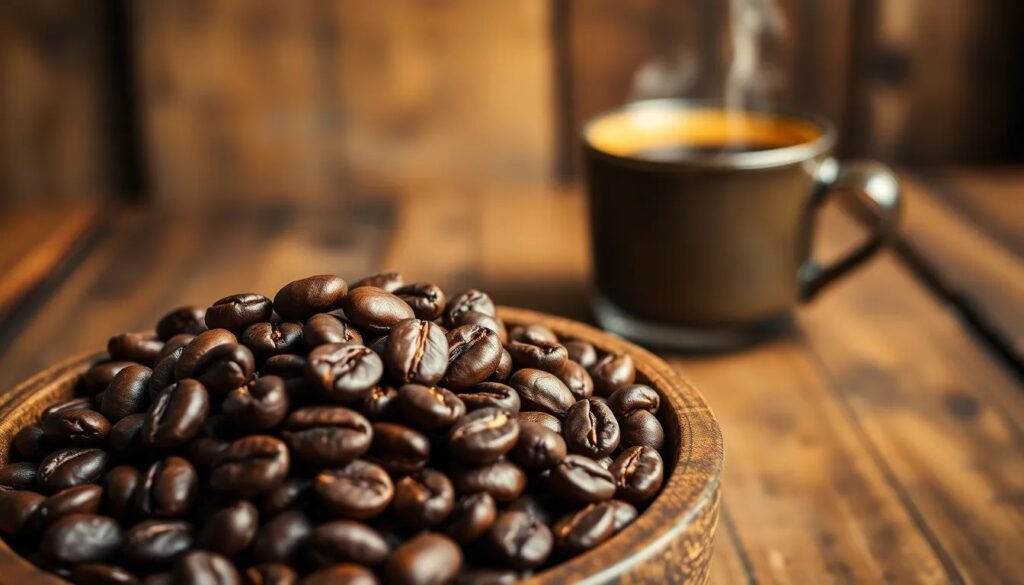
Artisanal Rituals for a Memorable Customer Experience
How can brands create a more balanced and memorable customer experience by blending artisanal product quality with thoughtful everyday rituals that keep people coming back?

TL;DR:
Wondering how fine to grind coffee for espresso? Getting the right grind size is key for a tasty shot. Too coarse, and your espresso will be weak and sour. Too fine, and it’ll be bitter and over-extracted. The perfect grind helps water flow through the coffee at just the right speed, pulling out all the best flavors. Let’s explore how to nail the perfect grind for your espresso, so you can enjoy rich, balanced shots at home.
Grind size plays a pivotal role in brewing the perfect espresso. If coffee beans are ground too coarsely, the water passes through too quickly. This results in an under-extracted shot that tastes sour and weak. Conversely, too fine a grind can over-extract the coffee, leading to a bitter and harsh flavor. Striking the right balance is essential for achieving a harmonious espresso shot.
The ideal grind size for espresso falls in the fine to medium-fine category. When rubbed between your fingers, it should feel slightly gritty, akin to table salt but finer. This consistency ensures the correct water flow and extraction time. Aim for a shot extraction time between 20 to 30 seconds. If the shot extracts in less than 20 seconds, the grind needs to be finer. Conversely, if it takes longer than 30 seconds, adjust to a coarser grind.
Testing the extraction time is a practical way to fine-tune your grind size. Start by pulling a shot and timing the extraction. If adjustments are needed, make small incremental changes to the grinder settings and retest until the desired extraction time is consistently achieved. This iterative approach helps in honing in on the perfect grind setting for your specific espresso machine and coffee beans.
The grind size directly impacts the flavor, balance, and crema of the espresso shot. A properly dialed-in grind ensures that the espresso is rich, well-balanced, and topped with a beautiful layer of crema. Consistency in grind size also makes brewing easier and more predictable, leading to better quality control and a more enjoyable coffee experience.
![Comparing Espresso Grind Size with Other Grind Sizes [how fine to grind coffee for espresso]](https://equipoisecoffee.com/wp-content/uploads/2024/09/Comparing-Espresso-Grind-Size-with-Other-Grind-Sizes-1.jpg)
Espresso grind size stands out due to its fine texture essential for the pressurized extraction process. This contrasts with other popular brewing methods like pour-over or French press, which require coarser grinds to optimize flavor and extraction time. Understanding these differences is crucial for achieving the best results with each method.
For instance, filter and pour-over coffee require a grind finer than sand but coarser than espresso, resembling the texture of table salt. This medium grind ensures proper water flow and extraction time, balancing the flavors without over- or under-extraction. On the other hand, the AeroPress can use a range of grind sizes, from fine (similar to caster sugar or table salt) to coarse (like breadcrumbs), depending on the desired strength and flavor profile.
Espresso requires a finer grind because it involves a high-pressure extraction process that demands a more compact coffee puck. The fine grind creates the necessary resistance for the water to extract the coffee’s flavors, oils, and aromas within the short brewing time of 20 to 30 seconds. Coarser grinds would allow water to pass through too quickly, resulting in weak, under-extracted espresso shots.
Adjusting the grinder settings and testing the espresso’s taste is necessary to find the best grind size for your machine and preference. Each espresso machine and coffee bean variety can behave differently, making a one-size-fits-all approach ineffective. Fine-tuning the grind size allows you to control the extraction process, balancing the flavors and ensuring a high-quality shot. The grind size directly influences extraction time, which in turn affects the taste and aroma of your espresso.
Begin with an initial grind setting in the fine to medium-fine range. If you are new to espresso making, start with classic Italian-style bean blends like Lavazza Super Crema, Maroma’s Orphea, or a high-quality 100% Arabica blend. These beans are generally forgiving and provide a good baseline for dialing in your grind size. Set your grinder to a fine setting, slightly coarser than powdered sugar but finer than table salt.
Testing and tweaking based on extraction time is a practical approach to perfecting your grind size. Aim for a shot extraction time between 20 to 30 seconds. If the extraction completes in less than 20 seconds, the grind is too coarse; make it finer. Conversely, if it takes over 30 seconds, the grind is too fine; adjust to a coarser setting. Always make small incremental changes to avoid drastic shifts in extraction time. This iterative process helps you achieve the ideal balance between grind size and extraction time.
Tasting and adjusting based on flavor is equally important. After achieving the correct extraction time, taste the espresso shot. If it tastes sour or underdeveloped, the grind may still be too coarse. If it tastes bitter or over-extracted, the grind may be too fine. Consistency in coffee weight is crucial during this process. Always use the same amount of coffee for each shot to ensure accurate comparisons.
![Impact of Grind Size on Espresso Taste and Quality [how fine to grind coffee for espresso]](https://equipoisecoffee.com/wp-content/uploads/2024/09/Impact-of-Grind-Size-on-Espresso-Taste-and-Quality-1.jpg)
Grind consistency is as crucial as grind size in achieving a high-quality espresso shot. Uneven coffee grounds can lead to uneven extraction, resulting in a muddled, imbalanced espresso. The consistency of the grind ensures that all coffee particles are of a similar size, allowing for uniform water flow during extraction. This uniformity helps in achieving a balanced shot with rich flavor, proper crema, and the right level of intensity.
Proper grind distribution plays a vital role in the quality of an espresso shot. Uneven distribution can cause “channeling,” where water pushes a hole in the coffee puck, leading to uneven extraction and poor taste. Channeling results in some parts of the puck being over-extracted while others remain under-extracted, producing a shot that lacks harmony and depth. Ensuring even distribution of the coffee grounds in the portafilter helps avoid these issues and contributes to a more consistent and flavorful shot.
The grind size directly impacts the flavor and quality of your espresso. A finer grind allows for a slower extraction, which can enhance the flavors and create a more intense shot. On the other hand, a coarser grind can speed up the extraction, leading to a weaker, under-extracted espresso. Additionally, the grind size affects the formation of crema, the golden layer on top of an espresso shot, which is a hallmark of a well-pulled espresso. Consistency in grind size and proper distribution are essential for achieving the perfect balance of flavor, crema, and mouthfeel.
Selecting the right coffee grinder is paramount for achieving the perfect grind size and consistency required for espresso. A high-quality grinder ensures that the coffee grounds are uniform, which is essential for extracting the best flavors from your beans. Without a good grinder, even the most expensive espresso machine can’t compensate for the inconsistencies in grind size, leading to subpar espresso shots.
A burr grinder is essential for achieving the ideal grind size and consistency. Unlike blade grinders, burr grinders crush the beans between two abrasive surfaces, providing a more even grind. Burr grinders offer multiple settings to adjust grind size, allowing for precise control, which is crucial for fine-tuning espresso quality. This precision helps in maintaining the consistency needed for an excellent espresso shot.
When comparing types of grinders, handheld burr grinders and automated blade grinders both offer unique benefits. Handheld burr grinders are portable, affordable, and provide excellent grind consistency. However, they require manual effort and are less convenient for grinding large quantities. On the other hand, automated blade grinders are faster and more convenient but often lack the consistency and precision of burr grinders. For the best results, an electric burr grinder is recommended, combining the convenience of automation with the precision of burr grinding.
Investing in a high-quality grinder can significantly improve your espresso shots. A good grinder ensures consistent grind size, leading to better flavor extraction, crema formation, and overall espresso quality. While the initial cost may be higher, the long-term benefits, such as improved taste and the ability to experiment with different grind settings, make it a worthwhile investment for any serious coffee enthusiast.
![Home-Roasted Coffee Beans vs Big Brand Beans for Espresso [how fine to grind coffee for espresso]](https://equipoisecoffee.com/wp-content/uploads/2024/09/Home-Roasted-Coffee-Beans-vs-Big-Brand-Beans-for-Espresso-1.jpg)
Freshness of the beans is crucial for a high-quality espresso. Freshly roasted beans yield better flavors, offering a more vibrant and aromatic cup. Coffee beans start losing their freshness and flavor as soon as they are roasted, and big brand beans often sit on shelves for extended periods before reaching the consumer. This delayed consumption leads to diminished flavors and a less satisfying espresso experience. In contrast, home-roasted beans can be used immediately after roasting, ensuring maximum freshness and superior taste.
Roasting coffee at home allows for better control over roast levels and freshness compared to buying big brand beans. Home roasting gives you the flexibility to experiment with different roast profiles, tailoring the process to your specific taste preferences. Unlike commercially available beans, which come in predetermined roast levels, home roasting lets you achieve the exact roast that brings out the best in your beans. This control over the roasting process ensures that your espresso is brewed with beans that highlight the flavors you desire most.
Home-roasted coffee beans often result in a richer, more complex flavor profile in the espresso. The ability to roast small batches means you can fine-tune the process to enhance specific flavor notes, resulting in a more personalized and enjoyable espresso. Big brand beans, on the other hand, are roasted in large quantities with a one-size-fits-all approach, which can lead to a more generic flavor profile. By roasting at home, you unlock a depth and complexity in your espresso that is hard to achieve with mass-produced beans.
Knowing how fine to grind coffee for espresso can make a big difference in your coffee’s taste. Aim for a fine to medium-fine grind, about the texture of table salt. Remember to adjust based on how fast your shot pours and how it tastes. If your espresso runs too quickly, try a finer grind. If it’s slow and bitter, go a bit coarser. With practice and patience, you’ll master the perfect grind for delicious espresso. Don’t be afraid to experiment – small adjustments can lead to big improvements in flavor. Soon, you’ll be pulling shots like a pro barista.
Grind coffee for espresso to a fine or medium-fine consistency, similar to table salt.
If you grind too fine, your espresso may taste bitter and take too long to brew.
It’s best to use a burr grinder for espresso, as it gives more consistent results than blade grinders.
A good espresso shot should take 20-30 seconds to brew. Adjust your grind if it’s too fast or slow.
Yes, coffee for espresso needs a finer grind than most other brewing methods to work properly.

How can brands create a more balanced and memorable customer experience by blending artisanal product quality with thoughtful everyday rituals that keep people coming back?

Independent coffee shops have always been about more than caffeine—they’re hubs of creativity, connection, and care. As café culture continues to evolve, new trends are

Introduction Independent cafes win when they feel like the neighborhood’s living room and operate with the discipline of a great kitchen. Below is a quick

Discover how top specialty coffee brands create lasting loyalty through storytelling, sourcing, and community connection. Real tips from 6 industry experts.

Discover the ultimate showdown between two beloved coffee brewing methods: the French press and Chemex. Explore how each technique caters to distinct palates, with the French press delivering bold flavors and the Chemex presenting a bright, clean taste.

Unlock the secrets to brewing the perfect cup of coffee with our comprehensive guide on using a coffee scale. Discover how precise measurements enhance flavor and consistency while eliminating bitterness.

Discover how water temperature plays a vital role in brewing the perfect cup of coffee. This article delves into the ideal temperature range of 195°F to 205°F for optimal flavor extraction, enhancing the enjoyment of high-quality beans.

Discover the world of curated specialty coffee bundles, perfect for enthusiasts seeking quality and craftsmanship. This article explores the benefits of ethically sourced, small-batch beans from brands like Equipoise Coffee, offering diverse flavor profiles that elevate your brewing experience.

Discover the art of manual brewing to elevate your coffee experience! This article explores various techniques like pour-over, French press, and AeroPress, revealing how they enhance flavor and your connection to every cup.